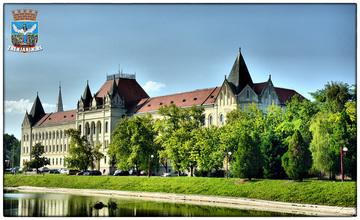History

Second World War and SFR Yugoslavia
After the Kingdom of Yugoslavia had capitulated on 14th April 1941, and the Third Reich occupied the country, the German Forces came into Petrovgrad. The authority in Banat had domestic Germans – Folksdeutscher, who immediately started to confiscate Jews' property and arrested patriots. The town was renamed Great Bečkerek and it was the headquarters of the occupation authority for Banat with the notorious police authority Juraj Speler and with concentration camp in Dusanova Street. The camp existed for almost two years and thousands of people passed through it. In town there were many underground groups supported by the Communist Party, which fought against Germans occupying forces. There were much sabotage, too, and the Germans made represials. On June 31st 1941, 90 patriots were shot in the region Bagljaš and on November 19th 12 some more. Individual resistance in town was crushed without mercy.
On 2nd October 1944 the Red Army Forces came into town and after a short fight, took command in most vital public buildings. The following day the first meeting on National Liberation Committee for the town Petrovgrad was held. Djordje Martinović, the father of the National Hero Sonja Marinković was chosen the first president. Besides her, eight more members of the national liberation resistance, from the town and its surroundings were announced National Heroes: Žarko Zrenjanin – Uča, Svetozar Marković – Toza, Pap Pavle, Stevica Jovanović, Servo Mihalj, Dr. Boško Vrebalov, Nedeljko Barnić – Žarki, Bora Mikin – Marko. During the World War II, the town infrastructure was kept almost saved. Except in the final fights for the town, there were no war actions on the territory of the town. The Germans tried to damage and destroy some industrial buildings, but it was prevented. Only Anau-Winkler’s mill and the monumental Jewish synagogue in the centre of the town were destroyed.
After World War II important social-political changes were made in the country, which, of course, had their influence on the development of Zrenjanin, newly named in 1946. In August 1945 the Agriculture Reform Act came into force, in June 1950 the Worker Self-Management Act, in 1959 the first direct urban plan of the town development, which indicated the urbanism-economic development of the town, was passed. The development, in the first after war decade, was directed by the directive plans, which were based on the principles of socialist economy in which the most important industrial branches were industry and agriculture. By the 1980’s many people left their villages and moved into towns which brought many changes in the social, educational and ethnic structure of the town. There was permanently shortage of housing. That is why many new parts of the town and many new apartment buildings were built. Zrenjanin became an important agricultural, industrial, cultural and sport centre of the Socialist Federative Republic of Yugoslavia.
 Skupstinagrada Zrenjanina
Skupstinagrada Zrenjanina